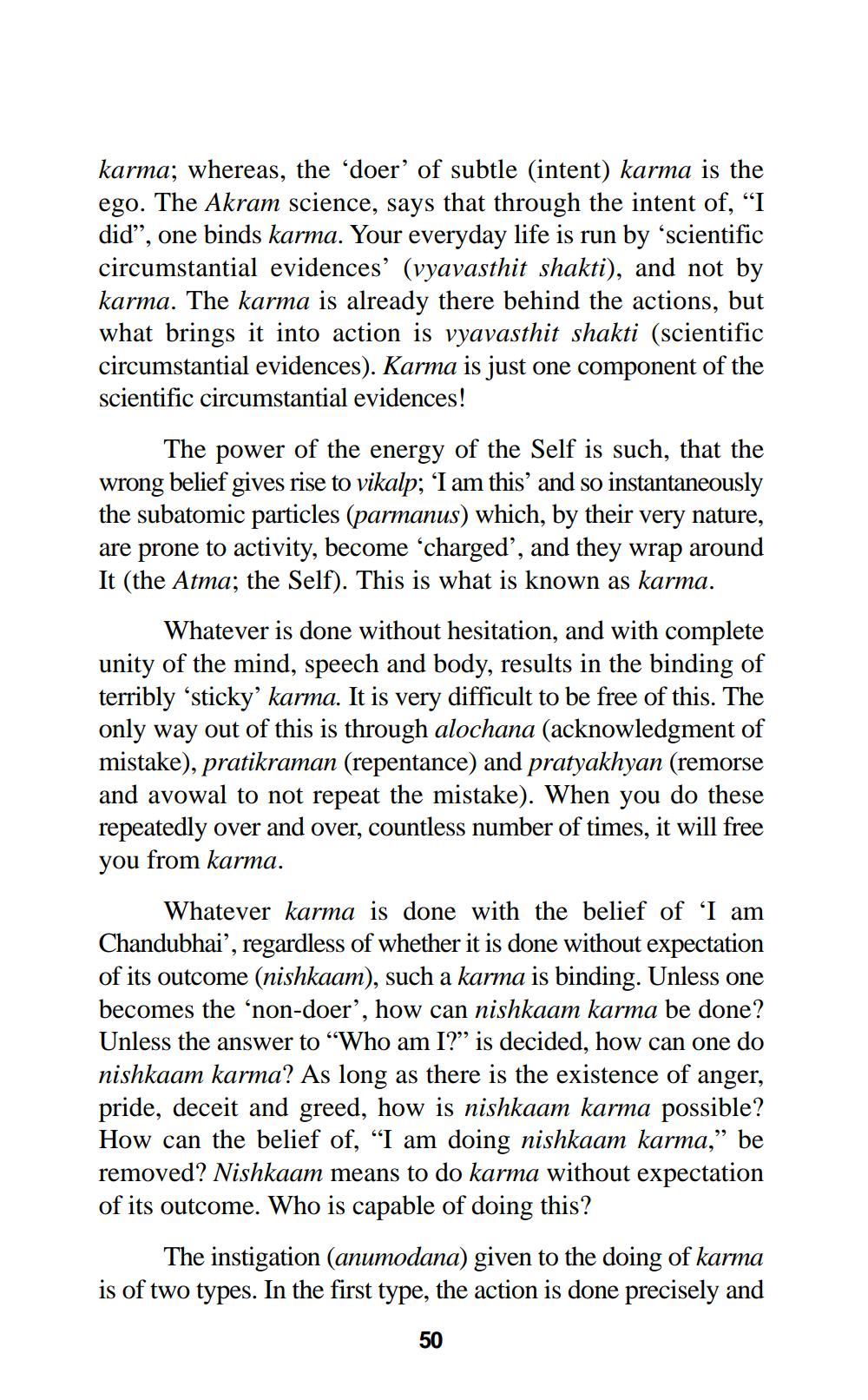________________
karma; whereas, the 'doer' of subtle (intent) karma is the ego. The Akram science, says that through the intent of, “I did”, one binds karma. Your everyday life is run by ‘scientific circumstantial evidences' (vyavasthit shakti), and not by karma. The karma is already there behind the actions, but what brings it into action is vyavasthit shakti (scientific circumstantial evidences). Karma is just one component of the scientific circumstantial evidences!
The power of the energy of the Self is such, that the wrong belief gives rise to vikalp; “I am this' and so instantaneously the subatomic particles (parmanus) which, by their very nature, are prone to activity, become ‘charged', and they wrap around It (the Atma; the Self). This is what is known as karma.
Whatever is done without hesitation, and with complete unity of the mind, speech and body, results in the binding of terribly ‘sticky' karma. It is very difficult to be free of this. The only way out of this is through alochana (acknowledgment of mistake), pratikraman (repentance) and pratyakhyan (remorse and avowal to not repeat the mistake). When you do these repeatedly over and over, countless number of times, it will free you from karma.
Whatever karma is done with the belief of 'I am Chandubhai', regardless of whether it is done without expectation of its outcome (nishkaam), such a karma is binding. Unless one becomes the ‘non-doer', how can nishkaam karma be done? Unless the answer to “Who am I?” is decided, how can one do nishkaam karma? As long as there is the existence of anger, pride, deceit and greed, how is nishkaam karma possible? How can the belief of, “I am doing nishkaam karma," be removed? Nishkaam means to do karma without expectation of its outcome. Who is capable of doing this?
The instigation (anumodana) given to the doing of karma is of two types. In the first type, the action is done precisely and
50




